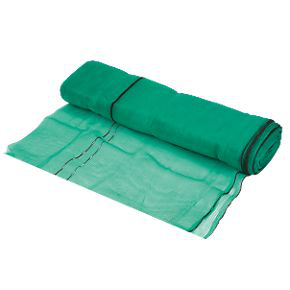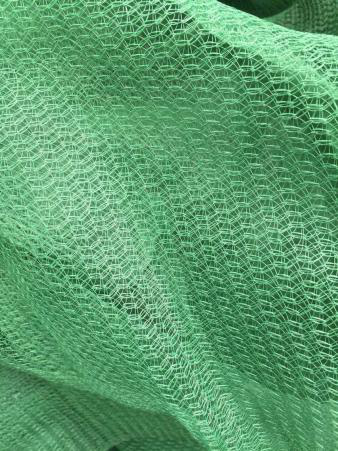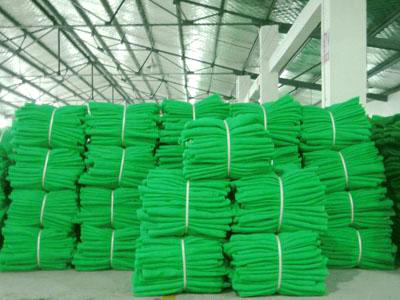Family buying range hoods诀çª
The particularity of aerospace products' use occasions determines the special requirements of aerospace components for materials used. Today, difficult-to-machine materials such as stainless steel, aluminum alloys, titanium alloys and high-temperature alloys have been widely used in the aerospace industry. The gradual application of new materials, new structures, new technologies, etc. in aerospace industry processing has made the processing of aerospace parts more and more difficult, which in turn has made the use of high-performance standard tools and special-purpose for aerospace parts processing. Tools can meet increasingly high processing requirements.
Aerospace industry parts processing demand for a large number of carbide tools and ceramic tools
With the wide application of difficult materials such as titanium alloys and superalloys in the aerospace industry, how to correctly select and use tools reasonably for high-quality and high-quality machining has become a very important industry topic. With the mutual promotion of workpiece materials and tool materials and structures, the aerospace manufacturing industry has been continuously developed. It can be said that the continuous development of cutting tools is the driving force for the continuous development of the aerospace manufacturing industry.
At present, the tool materials widely used in the aerospace industry mainly include the following categories: tool steel (carbon tool steel, alloy tool steel, high speed steel), cemented carbide, ceramic and superhard tool materials. Among them, cemented carbide tools account for the largest proportion, and are the leading tools in aerospace manufacturing, and the application range is quite extensive. Compared with cemented carbide, ceramic materials have higher hardness, hot hardness and wear resistance, and chemical stability and oxidation resistance are better than hard alloys. Therefore, ceramic tools have become the development of cutting tools in the aerospace industry. A mainstream.
A technician from Shenyang Liming Hangfa Group spoke about some of the company's experience in using tools. In the process of aerospace materials processing, slot machining and hole machining are difficult to process. For example, engine disc parts, shaft parts, and machine parts require very high demands on machining tools. Therefore, high-performance carbide standard tools and carbide non-standard tools are used in the processing of such parts. . The technician believes that the selection of tools in actual machining should consider the following factors: workpiece material, workpiece shape, processing requirements, machining machine tools, system rigidity, surface quality technical requirements.
Taking turbine boring parts as an example, from the analysis of workpiece materials, difficult-to-machine materials such as deformed superalloys and cast superalloys are widely used. These difficult-to-machine materials have small thermal conductivity, high specific strength, high cutting temperature, and easy work hardening. The tool wears quickly, the tool life is short, and the tool consumption is large, so the tool geometry must be chosen reasonably. From the perspective of the workpiece structure, the wall is thin, the rigidity is poor, and it is difficult to process. When the convex part of the part is machined, the tool system is easy to interfere with the parts and the fixture. Therefore, the tool path must be optimized, such as the insertion milling instead of the side milling, the idle stroke Quickly move the tool, optimize the position of the lift, and use helical interpolation to mill. From the analysis of the machining process, the machine needs to be roughed, semi-finished and finished. In order to save the cost of the tool, high-performance ceramic milling cutter can be used for rough machining when manufacturing such parts, semi-finishing and finishing. The use of standard carbide tools and non-standard high-performance special tools can significantly improve production efficiency. In terms of processing economy, the tool configuration plan needs to be continuously improved, and the latest products developed by the tool manufacturer should be used as much as possible.
When talking about the selection of tools, a technician from a research institute of the Aerospace Science and Industry Group said that when machining titanium alloys, high-temperature alloys, etc., they would prefer Walter's WSM35 and WSP45 blades. When the depth of cut is small, use The cutting speed of these two kinds of inserts can reach 70~150m/min when milling the workpieces of the above materials. When processing difficult-to-cut materials, the high-grade CVD coating grade is CP200 and the uncoated grade is 890. Blades, these two blades are two high-hardness ultra-fine particle grade tools for high-temperature alloy finishing and titanium alloy processing, and also have good effects on stainless steel finishing. In addition, they will also use imported brand tools such as Kenner, Sandvik Coromant and Iskar to process difficult-to-machine materials such as high-temperature alloys, titanium alloys and FRP composites.
Aerospace parts processing requires tool suppliers to work closely with users
Nowadays, the development of domestic aerospace knives is similar to that of other industries. If there are machining problems that cannot be solved by existing tools on the market, especially titanium alloys, aluminum-magnesium alloys, etc. encountered in the processing of high-precision products in the aerospace industry. The difficult processing of difficult materials and composite materials requires close cooperation between tool suppliers and users, and the development of special tools through joint development and trial cutting. At the same time, before the products are market-oriented, the tool manufacturers have undergone a lot of experiments and trials to ensure that they meet the various needs of the user's processing.
Yang Wei, executive deputy secretary-general of China Aerospace Tools Association, believes that most of the domestic tool companies can provide special tools according to the actual needs of users. The technical content and product quality are not very high, and the general tool products on the market are incomplete. The quality is not high, so the user still uses imported tools in the process of use. International famous brands such as Sandvik Coromant, Iskar, Kenner, Seco and Oushi machines have offices in large cities in China, and it is convenient to purchase tools, and good after-sales service and product quality assurance. It also makes its competitive advantage better than domestic enterprises. In such a competitive environment, China's aerospace tools industry should give full play to the ability of independent innovation to achieve the localization of tools for application companies.
A tool engineer from Shenyang Liming Aerospace Group said that tool suppliers should understand the real needs of users and provide users with the products they need most according to their actual needs. Tool suppliers should also be able to do technical guidance and provide detailed information on the tool, such as what kind of tool is suitable for processing the material workpiece, and at the same time give the best cutting parameters of the tool. Specifically, users hope that engineers sent by tool suppliers should not only be familiar with domestic and foreign tools, material technology and development trends, but also familiar with metal cutting technology, as well as the selection and application of machine tools, general-purpose tools and CNC tools. Familiar with all kinds of CNC machine tools, can independently compile the machining process and tooling solutions, so that users can access the world's most advanced tool technology more quickly, and at the same time let users get more cost-effective tool products and excellent after-sales service.
The engineer also said that tool suppliers should constantly understand the needs of users, not only to supply high-quality tools to users, but also to provide users with feasible tool solutions, regular training, and advanced cutting technology and high-end cutting concepts to users. Technician. Improve aerospace companies' cutting technology through effective integrated tooling technology support. This will enable tool makers to promote their advanced cutting tools and meet the needs of aerospace industry cutting technology advancement, forming a good atmosphere for the aviation industry users and tool suppliers to achieve a win-win situation.
Scaffolding Net, which is also called as debris net, safety net, windbreak, wind shade, is used to cover scaffolds on buildings. It can protect people and things around the scaffolding system and construction site from falling objects. It can also used to create a barrier or partition sites during sports or recreational events. And it is extremely popular and widely used as a general garden netting, to cover plants, crops, seedlings and in the general agricultural environment. Will help keep out birds, butterflies and other pests from plants by its tight mesh.
Scaffolding net:
Type: HDPE monofilament net
Width: 1-12m or as per customer`s request
Grammge: 40-250GSM
Color: green, blue or as per your requset
Packing: in rolls, in cartons, or as per your request.





Scaffolding Net
Scaffolding Net,Scaffolding Net Debris Netting,Wind Shade Scaffolding Net,Scaffold Safety Net
HEBEI OHONG PLASTIC CO. LTD. , http://www.tarpaulin-factory.com